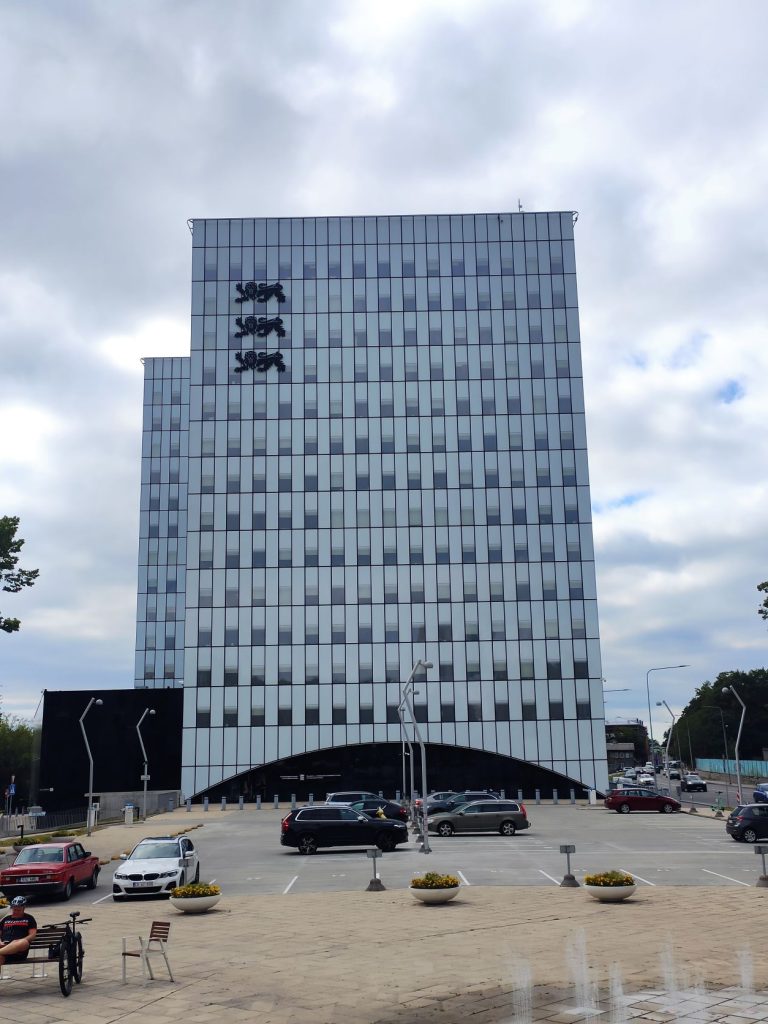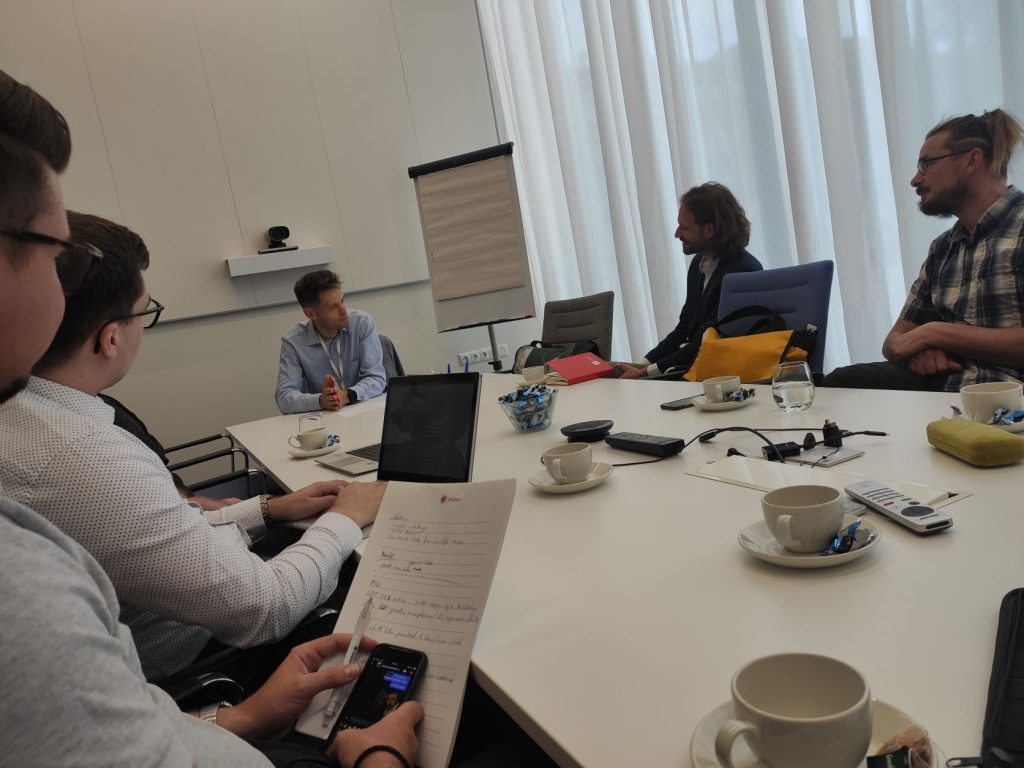NGO Mondo
On Thursday morning, our students group met in the hip and creative district of Telliskivi to visit the NGO Mondo. After the daily briefing we were warmly welcomed by Meelis Niine, project manager and migration expert at Mondo.

Shortly after Meelis started with his presentation, we were aware that, compared to the days before, we were going to gain a different but not less interesting insight into Estonia. Mondo is an Estonian civil society organization, employing 25 people working towards alleviating global inequality and raising awareness about migration. The NGO is operating in 13 countries (incl. Estonia), maintaining offices in Tallinn and Kampala, Uganda. Their main programs focus on the aspects of “education & health”, “livelihood”, “environment”, “global education”, and “digital empowerment”. According to Meelis, the reasons for inequality are very complex and one can see that the inequality between countries is decreasing while within the countries the inequality increases. Mondo always works together with local partners in a bottom-up approach to match the local needs. Thanks to regular meetings with the partners, Mondo can evaluate these needs and get new insights, maybe even in new countries.
After a short introduction, three of the main foci got explained deeper to us by Meelis. In the centre of Mondos “education and healthcare” program are the 258 million children who are currently out of school. Most of them live in the sub-Saharan area. With a donation of 50 Euros, private donors can finance a schoolyear for a child. But their money also indirectly helps the children in need through investments in infrastructure (schools and housing), in education for teachers and proper food. Today, around 450 children are benefiting from Mondo’s work.
The “livelihood” program tries to support women and young people in learning new skills to generate income. A lot of people in sub-Saharan Africa are living under the poverty line. According to Meelis, the team at Mondo can’t change the global problem, but they try to provide the tools needed for the communities to help them solving it on a long run. Volunteers are helping in practical business cases like designing a product and promoting it. Also, they can earn a lot more in exporting the products to Estonia than selling them locally. 300 women, who produce around 1’000 baskets and 10’000 tins of skin cream per year, are currently supported.

The “digital empowerment” program focuses on enabling the vulnerable with skills and tools needed to actively participate in the digital world. As an example, Meelis again mentioned the population of sub-Saharan Africa, where people in rural areas are not that well connected. The local needs are very different, and Mondo tries to match them with questioning focus groups on premise. The aid consists of helping with simple tasks, for example calling the family, over the discussion of safety issues to even assisting in marketing and promoting issues, like putting photos of a product online or using social media for business purposes.
Mondo is also active in Estonia itself. Within their “global education” program, they want to contribute to the growth of the Estonian youth into caring global citizens and enhancing motivation among the community members to support development cooperation and humanitarian aid. This also tackles the issue of rising inequality in Estonia. The civil society organization uses different actions to reach its goal, like for example the provision of workshops, courses, films, and even a library. Meelis further explained, that the civil society organization also focuses on the training of educators via summer school, because they act as a multiplicator. Furthermore, art is considered being a very clever way to engage people. Especially in the field of migration, music is a great way to get in touch with the youth, because music is a very relevant topic in daily live.
We closed the inspiring visit at Mondo with a broad discussion about various topics like migration in Switzerland and Estonia, financing the NGO, the ongoing war in the Ukraine as well as the lifecycle of a project. It was a great experience to get a different view of Estonia through the eyes of a local NGO.
Ministry of Finance
In sharp contrast to our morning program, we learnt more about the public finances in Estonia in the afternoon when we visited the national Ministry of Finance. Alongside three other ministries, it is located in the tall, neat government building at Suur-Amerika. We had the chance to lead a broad discussion with Andres Kuningas, Head of the Department for EU and International Affairs, about the structure of the Estonian government and their financial system.

Estonia has two tiers of government: the state and 79 municipalities. The state agencies are all centralized in the capital, except for the Ministry of Education and Research located in Tartu. A project to decentralize the agencies across the state failed partially. The government of Estonia consists of a representative president, a parliament, and an executive government, which is most times formed by a coalition of three parties. The ruling cabinet consists of 15 ministers and is led by Kaja Kallas from the liberal and centre-right Reform Party, together with the right-wing national-conservative Pro Patria and the centre-left Social Democrats. In opposition are two parties: the centre-left Centre Party and the conservative far-right EKRE.
Since 2011, the Euro is the official currency in Estonia. The GDP of Estonia amounts up to USD 31 billion or USD 23’300 per capita, which is around 70 % of the EU average, though it is still on a rise. Main contributing industries are the IT-sector, forestry and wood processing, power production as well as classic manufacturing. Covid-19 had less impact on Estonia than on other countries, mainly thanks to the already high level of digitization. As of today, the ongoing war in the Ukraine and the high inflation rate are the biggest threats to the flourishing economy. To tackle the inflation rate, which currently is at a level of around 20 %, the government starts to compensate some of the electricity bills and limiting the prices. Overall, the unemployment rate stands at about 6 % at the moment. In certain sectors the lack of people is high, and therefore salaries are rising fast, which is also problematic regarding the ongoing inflation.
The Ministry of Finance is divided into four departments, which are:
- State, Local Governments and Spacial Planning
- Public Finances and Taxes
- Financial Policy and External Relations
- Public Procurement, State Aid and Assets
It is led by two Ministers, the Minister of Finance (Keit Pentus-Rosimannus) and the Minister of Public Administration (Riina Solman). The Ministry is responsible for several tasks, such as: budgeting, legislation of taxation and financial services, public procurement and state support, regional policy as well as asset management of the infrastructure, which is mostly public owned.
Andres Kuningas stated that the budgeting process is heavenly influenced by EU-regulation and consists of a multi-annual planning as well as a yearly planning. As a result of the pandemic, these two processes were harmonised and are taking place simultaneously in August. The Estonian government has also begun with the implementation of the activity-based costing, trying to measure state activity better and making it easy to compare. The project is very hard to start because you need to demolish the existing silo-structure and convince several agencies to participate. Andres Kuningas unfortunately could not find an answer for our question, why Estonia started this project. Hence, we can only speculate that it might be because of the Estonian “try-and-error” culture and their role as a frontrunner.

30 years ago, when Estonia gained independence, very young leaders came to power. They wanted to implement a simple, western-oriented system which focused on free trade. This neo-liberal thinking is still deeply rooted in the mindset of Estonians. On the other hand, the past crises with Covid-19 and the Ukrainian war led to a higher demand of a more state-oriented economy. According to Andres Kuningas, there exists the possibility that the implementation of a progressive tax-system could come up as a discussion topic in the context of next year’s election campaign. This measurement could theoretically assist keeping the debt-level low, but it isn’t very popular among the governing parties. As of today, the state debt is around 20 % of the GDP, which is still very low. A lot of infrastructure-projects are funded by EU. These financial aides relieve the budget. When the EU money flow decreases, adaptions will be necessary. With the Estonian domestic fiscal regulation (basic budget act) the base is laid to keep the debt-level on a low basis. Furthermore, Andres Kuningas believes that Estonia will contribute more funds to the EU than it receives by 2028. We will see how this eventually play out.